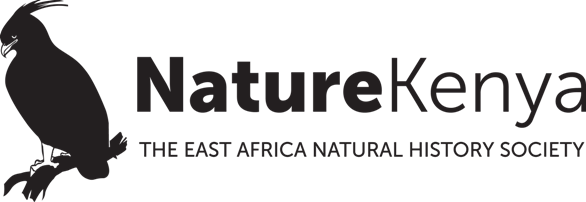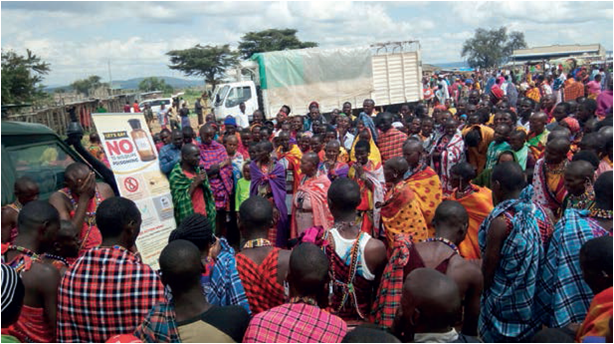Wind power is considered to be a clean, low cost and sustainable source of energy. It is also one of the fastest growing electricity sources around the globe. Kenya’s potential for wind generation is amongst the highest in Africa, with the 310 megawatt Lake Turkana Wind Power project set to become the largest wind farm in Africa once operational.
Compared to fossil fuels, wind power is relatively more environmentally friendly. However, wind turbines and their associated infrastructure, notably power lines and towers, pose a threat to birds and bats. Spinning blades of wind turbines are potentially dangerous to migrating birds, placing them at risk of colliding with the turbines. The location of wind farms is therefore a serious consideration when it comes to wind power. Risks greatly increase when wind turbines are located in or near major migratory routes, stopover sites or key breeding or foraging areas for birds and bats.
A recent analysis placed Kenya among countries with the highest concentrations of bird species vulnerable to wind power impacts. While bird ‘sensitivity maps’ have been produced for countries along the Rift Valley flyway to the north, no comprehensive assessment has been carried out in Kenya. Basically, wind power developers in Kenya have been operating in the dark in respect to biodiversity impacts owing to the lack of reliable information. This information gap for biodiversity and wind power has presented a significant obstacle to realizing wind energy potential in Kenya.
To address this, the Ministry of Energy is carrying out a strategic environmental assessment (SEA) for wind power and biodiversity in Kenya. The national SEA for wind and biodiversity is envisaged as a tool for decision making by government and private sector on placement of wind farms, with special consideration on migratory soaring birds, saving time and money. Information provided by the SEA will help to inform decisions on the safe siting of new wind power developments, ensuring that negative impacts on important migration routes, stopover sites or breeding areas are minimized.
An expert technical consortium (dubbed the Kenya Bird Conservation Consortium) comprising of Nature Kenya, The Peregrine Fund Kenya and BirdLife International, working in partnership with The Biodiversity Consultancy (TBC), is conducting the SEA. The process is supported by USAID through its program implemented by Tetra Tech. Tetra Tech has contracted The Biodiversity Consultancy (TBC) to lead the SEA process. The Kenya Bird Conservation Consortium, TBC, Tetra Tech and USAID/Power Africa effectively lobbied the Ministry of Energy to own the national wind power SEA process.
As part of the process, the Ministry of Energy convened a meeting in August to deliberate on the SEA. The meeting sought to create awareness on the SEA among energy and conservation stakeholders to promote understanding, consensus building and buy in. It also sought to get the sector players’ input on the proposed SEA.
Key outcomes of the meeting included:
- The national wind power SEA should not be construed as a barrier to projects. Its primary goal is not to designate no-go areas, but to highlight critical biodiversity-related issues that wind power developers in Kenya should bear in mind to avoid adverse impacts and reduce risks to their projects and investments.
- The SEA will follow procedures that are laid out in national legislation. To effect this, a meeting will be held among key stakeholders, including the National Environment Management Authority (NEMA) and the Ministry of Energy for further discussion.
- The SEA process shall strive to be as inclusive as possible including the involvement of as many stakeholders as possible but with considerations of time, financial and other resources.
Site-specific actions will be addressed during environmental impact assessments for specific projects.
Participants in the meeting were drawn from the Ministry of Energy and Petroleum, the Ministry of Environment and Forestry, USAID/Power Africa, the Energy Regulatory Commission, the Kenya Electricity Generating Company (KenGen), NEMA, Kenya Wildlife Service (KWS), the Council of Governors, Lake Turkana Wind Power, Kenya Power Institute of Energy and Research, the World Bank, The Biodiversity Consultancy, BirdLife International and Nature Kenya, among others.
Consultations between the Kenya Bird Conservation Consortium and wind farm developers started in early 2017. Over time, wind power project proponents demonstrated to the Kenya Bird Conservation Consortium that a wind farm could achieve a net gain for populations of the critically endangered vultures. This was based on in-depth analysis and a business case.
In addition, the project proponents effectively influenced USAID, through their Power Africa Transactions and Reforms Program (PATRP), to support a national strategic environmental assessment (SEA) for wind power in Kenya.

